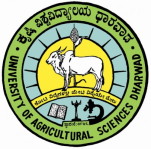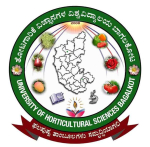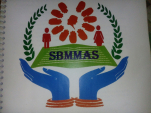CGIAR Research Program on Dryland Systems - DS
Leader Thiagarajah Ramilan, International Crops Research Institute for the Semi-Arid Tropics - ICRISAT
Team
members: 8
Partner
organizations: 8
Budget 2025
USD :
0
Activities/Products: 10
Description
The Karnataka dryland systems action site which targets northern dry zone of Karnataka state in India has a total geographical area 5.077 million ha, of which 3.547 million ha is under net cultivation. The zone consists of entire districts of Bijapur, Bagalkot, Bellary and Koppal, and parts of the districts of Raichur, Gadag, Dharwad and Belgaum. The zone is primarily agrarian and 80 per cent of its population depends directly or indirectly on agriculture. Here the integrated research activities as part of CRP Dryland Systems are being implemented in three action villages in Bijapur district. Two villages Nadihal and Mannur are largely rainfed and Balagnur has 40% of its net sown area under irrigation. This site has varied soil resources, viz., deep black, medium black and shallow black soils, red fine clay loam and red sandy loam. Deep and medium deep black soils are the major soil groups followed by shallow black soils. The average annual rainfall is 585 mm and received in about 39 rainy days with a coefficient of variation of 32%. Farmers livelihood and farming systems are constrained by multiple factors like low and erratic rainfall (Inter-annual, Inter-seasonal & Intra-seasonal); temperature fluctuations during December-January; humidity variations during November-February; high salinity of irrigation ground water; low soil fertility; fodder scarcity, low yielding animals, and labour scarcity. These drylands are caught in a low-productivity level equilibrium trap. The gap between irrigated and dryland agriculture has steadily widened, with the productivity of the latter being less than half of the former. Almost all the open wells in Nandihal and Mannur have dried up, rainwater management and ground water recharging are the priority interventions under CRP-DS. In Balangnur, about 150 farmers have adopted agro-horticulture dominated by lemon and legume combination, here the low productivity and poor access to market is being targeted through better integrated management options and collective action. ICRISAT with CG and NARES partners is implementing research for development targeting the whole farming and livelihood systems. The focus is to restore the ecological balance by harnessing, conserving and developing degraded natural resources and prevention the soil run-off, regeneration of natural vegetation, rain water management enabling multi-cropping and diverse agro-based activities for sustainable livelihoods on watershed basis. Farm typology specific interventions for sustainable intensification of crop and livestock production, options for improved common property resources management, rain water management (in-situ and ex-situ) and agro-horticulture and agro-forestry are part of CRP DS strategy to enhance farming systems resilience and rural livelihoods in Bijapur. Advanced systems tools like bio-economic modelling, whole farm system modelling are being used to work out land-use planning systems, which are economically viable and make careful use of available soil moisture through appropriate tree-crop-livestock mixes. Under CRP DS, we have initiated the idea of Innovation Platform for engaging partners for scaling-up the systems research to ensure impact on larger scale by providing holistic solutions. Our interventions are targeted at household as well as landscape level through improved technologies, indigenous practices, institutions and policies. Our research also target equitable participation and capacity development of women and youth. In partnership with all stakeholders, we aim to boost resilience and sustainable intensification of dryland farming systems and associated livelihoods in northern dry zone of Karnataka through a more sustainable and integrated mobilization of existing resources and by creating an enduring basis for structuring local initiatives.
Dry farming is an exercise of constrained optimisation of multiple objectives. These include household food security, fodder and firewood needs, minimum cash flow, use of available household labour etc. The risk of rainfall failure is the most enduring concern. Traditional cropping systems use diverse strategies like mixed-cropping and intercropping for rainfall insurance. The crop combinations and sequences are often highly complex and have come up taking into consideration minute variations in soil type, depth, crop maturity and susceptibility to rainfall fluctuations and household needs. As much as 60 crop mixes are reported to have existed in villages of peninsular India (Jodha, 1977). The number of crops mixed in one plot ranged from two to eight or even more. It is important to understand their value in terms of their contribution to stability of household income and maintenance of soil nutrient status. They are in great danger of being trampled over by mono-cropping practices once water becomes available.
We need not only viable agriculture packages but meticulously worked out land-use planning systems, which make careful use of available soil moisture through appropriate tree-crop mixes. Here, again, what works and what fails would be known only after more detailed evaluation of such systems in the field. Another crucial area of neglect is livestock. Small and marginal farmers and landless labourers constitute almost two-thirds of these livestock-keeping households in India. Ownership of livestock has a crucial drought-cushioning role for small and marginal farmers. With increasing grazing regulations and encroachments of common land, availability of fodder from agricultural land is one of the central concerns of poor households, particularly in drought years. In spite of the vital role of livestock in a rural household, strategies of improving livestock productivity and health have not been systematically integrated as central interventions in the drylands.
To sum up, addressing the challenge of dryland agriculture involves implementation of a package of several interlinked components, namely, (a) Location-specific public investments in water infrastructure, (b) Soil enrichment and control of land degradation, (c) Agricultural package of locally appropriate seeds and low-cost, sustainable agricultural practices, (d) Strengthening livelihood options based on livestock, fisheries, agro-processing and forests, (e) Better support systems through credit, marketing, research and extension, (f) Mobilization of communities around natural resource rights, and (g) Learning from local contexts about possibilities and limitations of different interventions. This applies to all actors, scientists or government representatives, NGO activists or a member of local community.
1.2 Objectives
The Dryland Systems Research Program is designed to pursue new knowledge about dryland agro-ecosystems of the developing world and to develop technologies and policies that will improve the livelihoods of poor agricultural communities in target regions. The overall goal is to identify and develop resilient diversified and more productive dryland agricultural production systems that have the potential to be scaled-up, especially in dry areas where water is scarce. The Program targets the poor and highly vulnerable populations of the dry areas. It aims to develop technology, policy and institutional innovations to improve livelihoods, using an integrated agro-ecosystems approach to research-for-development.
As a part of this Program and to contribute to the aforesaid overall goal, the present study was undertaken in three villages of Bijapur district of Karnataka State (India), namely, Nandihal (Basavana Bagewadi Taluk), Mannur (Sindagi Taluk) and Balaganur (Sindagi Taluk) to assess the farm technologies presently being adopted in the selected villages and to propose suitable technological interventions dovetailed to enhance the livelihood security of the farm households, especially the small and the marginal ones in dry lands. A brief socio-economic profile of the farm households is also unearthed to support the analysis on technology assessment for the dryland systems in Bijapur.
Even at their low productivity levels, the quantitative significance of dryland agriculture is by no means small. Given the large size of dryland agriculture and its extremely low productivity levels, a unit rise in productivity in this sector is likely to have the largest impact on aggregate crop productivity.
As we are aware, type of soil and quality and quantity of water resources accessible to the farm household significantly contribute to the adoption of farm technologies by the household. The major soils in the action villages varied from shall to medium deep black. Soils in Nandihal were mostly medium deep black (70 per cent), while major soils in Mannur and Balaganur were red and shallow black, respectively (Table 6). The proportion of irrigated area to net sown area varied from as low as 10 per cent in Nandihal to as high as 40 per cent in Balaganur, Mannur being mid-way (20 per cent). This irrigation was sources from borewells in Nandihal and Mannur, while in Balaganur, canal was the major source of irrigation, followed by open well and borewell. Mannur has as high as 300 borewells, with depth of well ranging from 200-600 ft. Given the cropping intensity in Balaganur, the depth of borewell was observed to be relatively low therein, which was due to recharge of borewells by canals. Open wells that existed in Nandihal and Mannur have almost dried in contrast to Balaganur wherein about 500 open wells exist and most of them are functioning well.
Public investment is required to enable them to break out of this trap. Public investment in drylands has to be substantial, multi-directional and sustained over a long period of time.
There is clear evidence that the yield potential of dryland varieties is much higher than what has been achieved on the farm. It is more appropriate to view the drylands as a source for future growth. Even in the most optimistic scenario of further irrigation development in India, nearly 40% of national demand for food in 2020 will have to be met through increasing the productivity of rainfed dryland agriculture. Realising the potential of drylands is by no means a simple task. The drylands are caught in a low-level equilibrium trap. Public investment is required to enable them to break out of this trap. Dry farming is an exercise of constrained optimisation of multiple objectives. These include household food security, fodder and firewood needs, minimum cash flow, use of available household labour etc. The risk of rainfall failure is the most enduring concern. Traditional cropping systems use diverse strategies like mixed-cropping and intercropping for rainfall insurance.
Karnataka state has 10 agro-climatic zones and Bijapur district falls in the Zone-3 (Northern Dry Zone) of Agro-Climatic Region-II of the State, the biggest zone in the State comprising of 35 taluks and covering 26.7 per cent of the geographical area and 32.6 per cent of the net cultivated area of the state. The zone is characterized by the lower rainfall in Karnataka state with average annual rainfall of 585 mm received in about 39 rainy days. Villages selected from Bijapur district for technology assessment for dryland production systems are: Nandihal (Basavana Bagewadi Taluk), Mannur (Sindagi Taluk) and Balaganur (Sindagi Taluk).
In these villages, lack of timely and quality seed supply is a major concern. In some cases, fertilizer supply was also mentioned as an important problem. Livestock does not play a significant role, mainly because of lack of grazing areas and shortage of labour. Unlike in many parts of India, MGNREGA is not very popular. Migration of labour to sugarcane belts in Maharashtra is the main reason causing local labour shortage. Therefore, farmers are mainly interested in tools and techniques that improve their labour efficiencies. In this regard, RARS Bijapur has a number of simple tools that can increase labour efficiencies and particularly support the poor households and women who have no/less access to tractor and tractor mounted seeding and weeding tools. But these tools need to be widely popularized and adopted. The other serious problem of the community is salinity and inefficient water use in irrigated village (i.e., Balaganur). Introduction of simple tool that can help monitor water application by farmers and training farmers on water management are the proposed strategies in this village. This reduces the volume of water used/depleted and also decreases salt deposited as a result of over irrigation. Crop diversification, marketing problems and crop insurances were the major issues raised by the community.
To sum up, there is huge scope for technological interventions – both dryland (Nandihal/Mannur) and irrigated (Balaganur) ones. By and large, the farmers are unaware of technology basket available to them. Education, demonstrations, technology backstopping could significantly contribute to increased awareness and access to resources. A few institutional and policy interventions aimed at effective technology transfer, enhanced credit flow for accessing drip irrigation and labour saving devices, collective actions in procurement of inputs procuring and marketing of output(s), could make a huge impact on the agrarian economy of these villages, in particular and the region in general.
Atlas
Activities/Products
Projects
| Acronym | Project Title | Year | Section | Leader | Center | Budget | Start Date | End Date | View |
|---|
Outcomes and Impact
| Code | Outcomes and Impact | Type | Indicators | View | |
|---|---|---|---|---|---|
| 9 | Resilience to climate change extremes and disasters increased | research outcome | 0 | ||
| 1 | Female and male Farmers (inc.youth) maintain and increase indigenous crops/tree species | research outcome | 1 | ||
| 2 | Food and Nutrition security status increased (e.g. availability, consumption) | research outcome | 0 | ||
| 3 | Local community participation in co-design and co-implement village-based approaches increased | research outcome | 1 | ||
| 4 | Mono-cropping decreased | research outcome | 0 | ||
| 5 | Tools, methods, processes and capacity of stakeholders to create/customize resilience options improved | research outcome | 1 | ||
| 6 | Female and male farmers/shakeholders use/adopt/implement methods/tools/approaches/technologies/NRMpractices/Varieties/framework/concepts | research outcome | 3 | ||
| 7 | Crop yields increased | research outcome | 1 | ||
| 8 | Female and male farmers/stakeholders (inc.youth) awareness, skills and knowledge increased | research outcome | 5 | ||
| 10 | Water use efficiency and Water Productivity increased | development outcome | 2 | ||
| 11 | Operational efficency increased and drudgery reduced especially for women | development outcome | 2 | ||
| 12 | Multi-stakeholder partnerships and interactive learning increased | development outcome | 1 |
Personnel Involved
Partners











